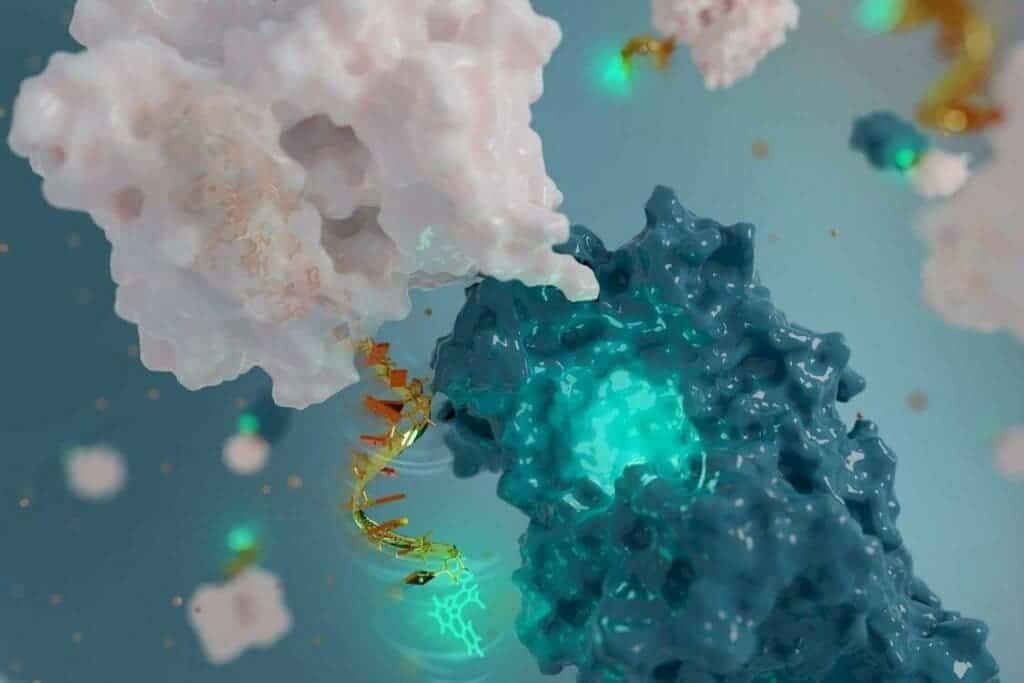
Chemists at the Université de Montréal have devised a nano-scale antenna using synthetic DNA to monitor structural changes in proteins in real-time. It receives light in one color and, depending on the interaction with the protein it senses, transmits light back in a different color, which can be detected. The technology could prove useful in drug discovery and the development of new nanotechnologies.
DNA contains all the instructions needed for an organism to develop, survive, and reproduce. The blueprint of life is also extremely versatile thanks to the self-assembly of DNA building blocks.
Using short, synthetic strands of DNA that work like interlocking Lego bricks, scientists can make all sorts of nano-structures for more sophisticated applications than ever possible before. These include “smart” medical devices that target drugs selectively to disease sites, programmable imaging probes, templates for precisely arranging inorganic materials in the manufacturing of next-generation computer circuits, and more.
Inspired by these properties, the Canadian researchers led by chemistry professor Alexis Vallée-Bélisle have devised a DNA-based fluorescent nanoantenna that can characterize the function of proteins.
“Like a two-way radio that can both receive and transmit radio waves, the fluorescent nanoantenna receives light in one color, or wavelength, and depending on the protein movement it senses, then transmits light back in another color, which we can detect,” said Professor Vallée-Bélisle.
The receiver of the nanoantenna reacts chemically with molecules on the surface of the target proteins. The 5-nanometer-long antenna produces a distinct signal when the protein is performing a certain biological function, which can be detected based on the light released by the DNA structure.
“For example, we were able to detect, in real-time and for the first time, the function of the enzyme alkaline phosphatase with a variety of biological molecules and drugs,” said Harroun. “This enzyme has been implicated in many diseases, including various cancers and intestinal inflammation.”
These nanoantennas can be easily tweaked to optimize their function and size for a range of functions. For instance, it’s possible to attach a fluorescent molecule to the synthesized DNA and then attach the entire setup to an enzyme, allowing you to probe its biological function. Furthermore, these crafty DNA-based machines are ready-to-use for virtually any research lab across the world. Vallée-Bélisle is now working on setting up a startup to bring this product to the market.
“Perhaps what we are most excited by is the realization that many labs around the world, equipped with a conventional spectrofluorometer, could readily employ these nanoantennas to study their favorite protein, such as to identify new drugs or to develop new nanotechnologies,” said Vallée-Bélisle.
The findings appeared in the journal Nature Methods.






